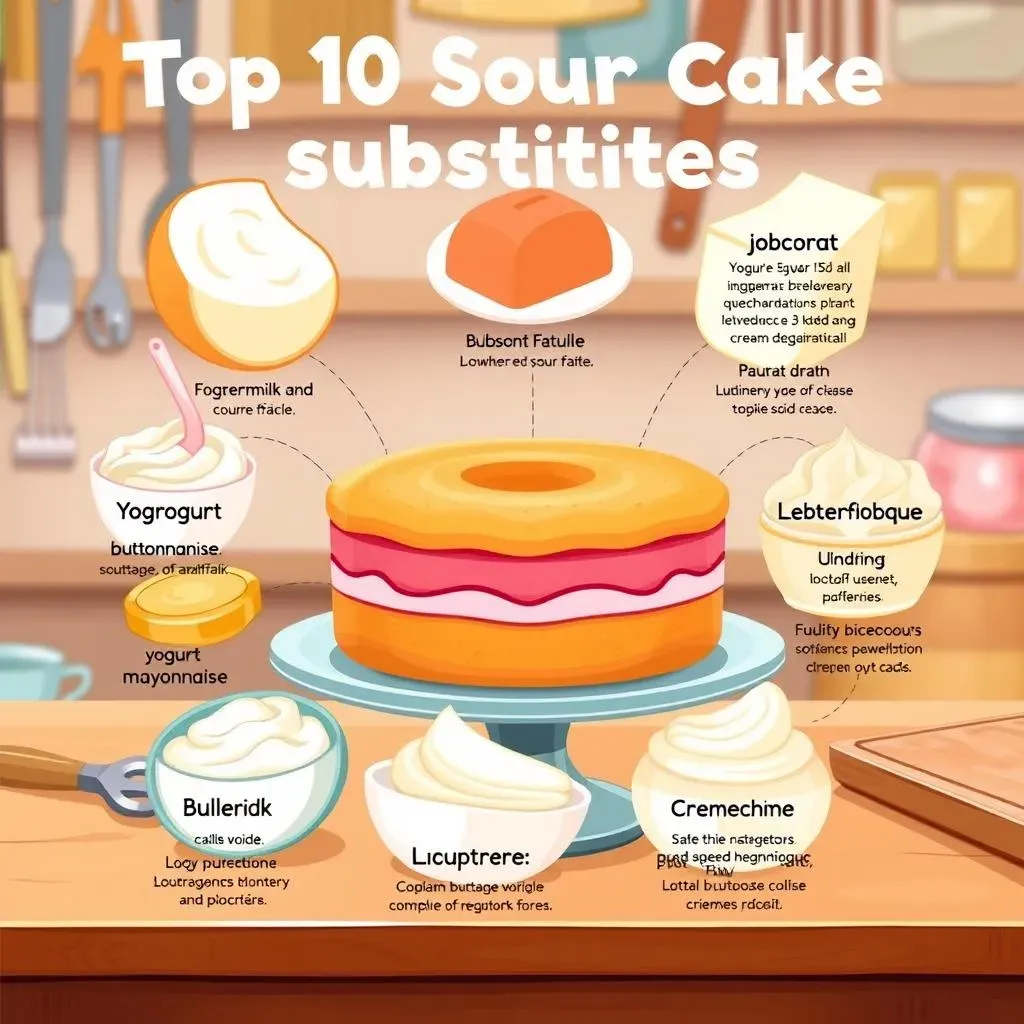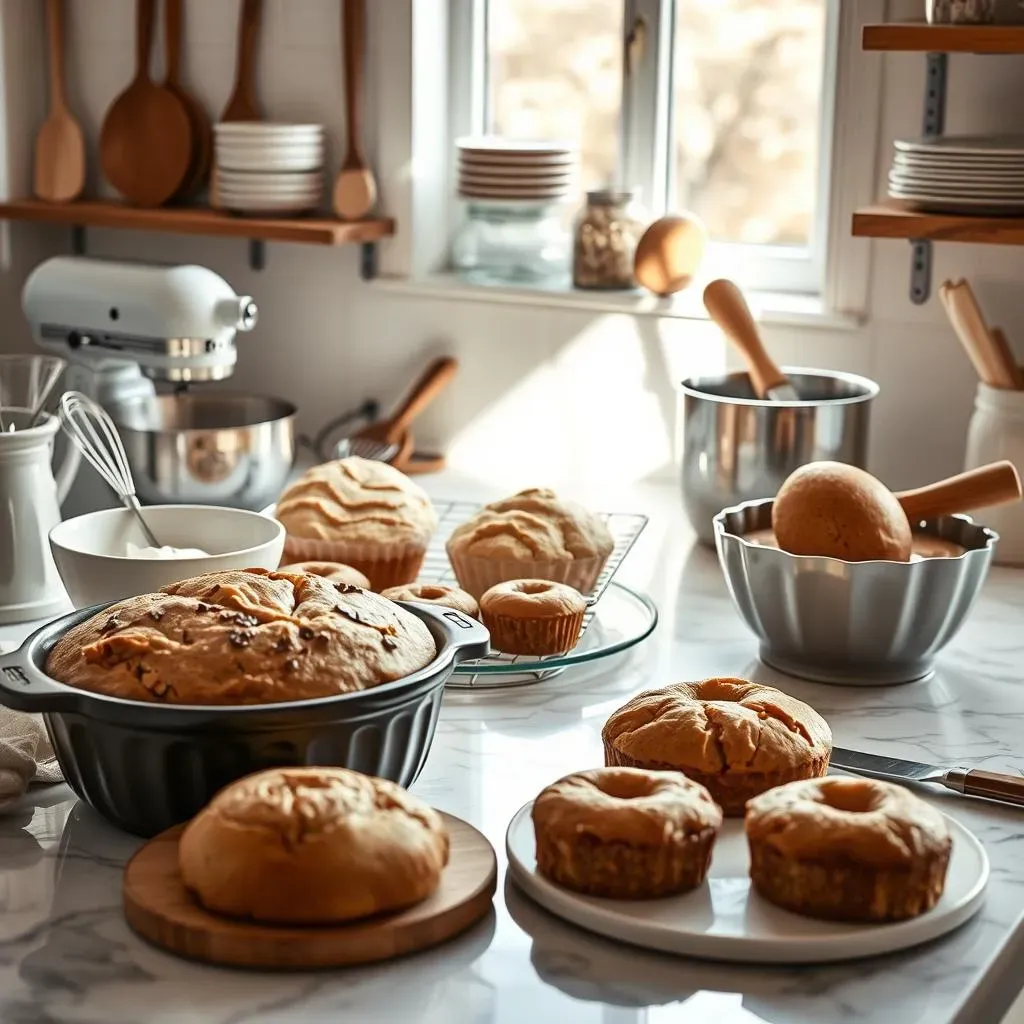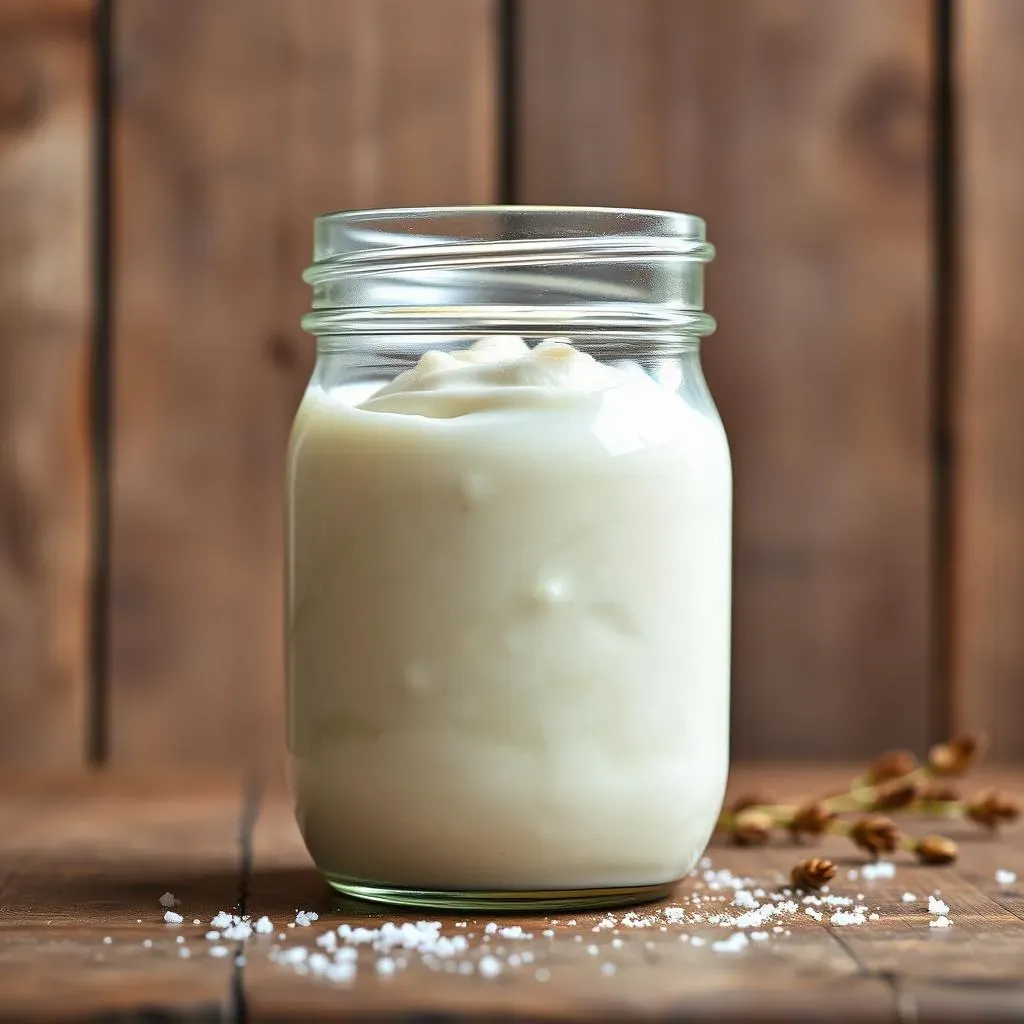Table of Contents
Ever found yourself mid-recipe, ready to bake that perfect cake, only to discover you're fresh out of sour cream? It's a baking tragedy, I know, it has happened to me, and it can throw a wrench in your plans. But don't panic! The good news is that a missing tub of sour cream doesn't have to mean a cake fail. Sour cream is a key ingredient for moisture and that slight tangy flavor in recipes, especially in a sour cream cake. But there are plenty of ingredients waiting in your fridge or pantry that can step up to the plate and do the job just as well. This article is your guide to navigating the world of sour cream cake substitute options. We will explore 10 fantastic alternatives, all while keeping your baking dreams alive. We'll look into why sour cream is so important in baking, then we'll dive into the best substitutes, how to use them, and even how to whip up your own sour cream in a pinch. So, ditch the baking blues and let's get started on your sour cream cake substitute adventure!
Why Sour Cream is a Baking Superstar

Why Sour Cream is a Baking Superstar
The Magic Behind the Tang
Okay, so why is sour cream such a big deal in the baking world? It's not just some random dairy product we throw in for kicks. Sour cream brings a unique set of superpowers to the table, or rather, to the mixing bowl. First off, that slight tang? It's not just there to be interesting; it actually balances out the sweetness in cakes and other baked goods. Think of it like the cool kid who keeps the overly enthusiastic sugar from throwing a wild party in your mouth. It adds depth and complexity, making the flavors pop instead of just being one-note sweet.
Beyond the flavor, sour cream is a total moisture magnet. It has a higher fat content than, say, milk, and that fat helps to keep your baked goods incredibly moist and tender. No one likes a dry, crumbly cake, right? Sour cream is like the secret agent that keeps that from happening. It also helps to create a really nice, delicate crumb – that soft, fine texture that makes every bite a delight. It's the ingredient that transforms a good cake into a great one, and that's why it's a staple in so many recipes.
More Than Just Flavor
It's not just about the taste and texture either; sour cream is a bit of a baking multitasker. The acidity in it can actually help activate baking soda, giving your cakes and muffins a beautiful lift. It's like a little science experiment happening right in your oven! Plus, because of its richness, it adds a certain level of decadence, making your treats feel extra special. It's the kind of ingredient that makes people ask, "What's your secret?" And now, you'll know! It's sour cream doing its thing, making even the simplest recipes shine.
So, yeah, sour cream is pretty awesome. It's the unsung hero of many a great cake. It's what makes those moist, tangy, perfectly textured treats possible. But, since we're talking about what to do when you don't have it, let's get down to the nitty-gritty and explore our options when the sour cream is MIA. Don't worry, there are plenty of heroes waiting in the wings to save your baking day!
Benefit | Why It Matters | Result |
|---|---|---|
Tangy Flavor | Balances sweetness | Complex, not overly sweet taste |
High Fat Content | Adds moisture | Moist, tender baked goods |
Acidity | Activates baking soda | Good rise, light texture |
The Top 10 Sour Cream Cake Substitutes You Need To Know

The Top 10 Sour Cream Cake Substitutes You Need To Know
Yogurt: The Go-To Substitute
Okay, let's talk substitutes, and first up is yogurt. Plain yogurt, especially Greek yogurt, is like the superhero of sour cream swaps. It's got that similar tang, that creamy texture, and it's easy to find in pretty much any grocery store. Plus, it's a pretty good source of protein, so you're sneakily making your cake a bit healthier, right? When you're using yogurt, aim for the plain, full-fat kind. The fat is important for that moisture we talked about earlier. Greek yogurt is even better, since it's thicker and closer to sour cream's consistency. You can use it in a 1:1 ratio, meaning if your recipe calls for one cup of sour cream, you use one cup of yogurt. It's that simple!
Now, if you only have low-fat yogurt on hand, don't worry. You can still use it, but your cake might not be quite as rich. You might want to add a tiny bit of melted butter or oil to compensate for the missing fat. And if you're using a thinner yogurt, like regular plain yogurt, you could drain it for a bit in a cheesecloth or a fine-mesh sieve to thicken it up. This will help get a texture closer to sour cream. Honestly, yogurt is so versatile, it's my go-to when I realize I'm out of the good stuff. It’s like sour cream’s slightly more health-conscious cousin that still knows how to party.
Mayonnaise: The Unexpected Hero
Alright, next up, we have a slightly more surprising contender: mayonnaise. Yes, you heard me right! Mayonnaise, that condiment you usually put on sandwiches, can actually work as a sour cream substitute in baking. I know, I know, it sounds a little weird, but it's true. Mayonnaise is made with oil, eggs, and an acid, like lemon juice or vinegar, which means it's got the fat and a bit of that tang you need for baking. However, it’s not a perfect 1:1 replacement, because it’s missing the dairy component, so it will have a slightly different flavor profile. If you use mayo, you'll want to use a bit less than the amount of sour cream the recipe calls for, maybe start with about ¾ of the amount, and adjust from there. You might also want to add a little extra lemon juice to give it a bit more tang.
The key here is to use a good quality, full-fat mayonnaise, that is, not the light version, because the fat helps with the moisture. I once had a friend who used a light mayo instead of sour cream in a cake, and let's just say it was a bit of a disaster. The cake was dry and the texture was off. So, lesson learned: full-fat mayo is the way to go. It’s a bit of a secret weapon, and it can save the day if you are in a pinch. It has saved me many times, especially when I’m doing some impromptu baking.
Substitute | Best Use | Notes |
|---|---|---|
Plain Yogurt (Greek) | Cakes, dips, frostings | 1:1 ratio, full-fat preferred |
Mayonnaise | Cakes, quick breads | Use slightly less, add a touch of lemon |
Buttermilk: The Tangy Contender
Now, let's move on to buttermilk. Buttermilk, despite its name, isn't actually super buttery. It’s a tangy, slightly thick liquid that’s a byproduct of making butter. It has that acidity that can help activate baking soda and it adds a nice depth of flavor. It’s not as thick as sour cream, so your cake might have a slightly different texture, but it will still be moist and delicious. If you’re using buttermilk, you’ll want to use the same amount as the sour cream called for in the recipe. If you want it a little thicker, you can add a tablespoon of cornstarch to the buttermilk, mix it in and let it sit for a few minutes before adding it to your recipe.
Buttermilk is also great because it adds a particular flavor profile that is somewhat similar to sour cream, but a little more subtle. It’s perfect for when you want that extra kick of flavor but also don’t want it to overpower other ingredients. I often use buttermilk in recipes where I want a very tender crumb and a slightly tangy flavor, such as in pancakes or muffins. It’s a great option to try if you’re looking for a change of pace from yogurt or mayo. It's like the sophisticated cousin that brings a certain elegance to the table.
Crème Fraîche: The Rich Option
Moving on, let's talk about crème fraîche. This one is like the fancy cousin of sour cream. It's a thick, cultured cream that’s known for its rich and slightly tangy flavor. Crème fraîche is a bit higher in fat content than sour cream, which means your cake will be even more moist and decadent. Now, it might be a bit harder to find in some stores and it’s usually more expensive than sour cream, but if you have it on hand, it’s a great substitute. You can use it in a 1:1 ratio, just like yogurt. It’s especially good in cakes where you want a super moist and rich texture. It’s the kind of ingredient that makes your cake taste like it came from a fancy bakery.
Crème fraîche is also a great option for frostings and toppings. Its richness and smooth texture make it ideal for creating a silky, decadent finish. I once used crème fraîche in a lemon cake frosting and it was absolutely divine. The slight tanginess of the crème fraîche complemented the lemon perfectly, and the texture was so smooth. It was a real crowd-pleaser. So, if you want to take your baking to the next level, consider using crème fraîche. It’s like the VIP of sour cream substitutes. It’s a little more luxurious and it can elevate your recipe to a whole new level.
Substitute | Best Use | Notes |
|---|---|---|
Buttermilk | Cakes, muffins, pancakes | 1:1 ratio, might need a thickener |
Crème Fraîche | Cakes, frostings | 1:1 ratio, very rich and creamy |
How to Use These Sour Cream Substitutes in Your Baking

How to Use These Sour Cream Substitutes in Your Baking
Okay, so you've got your substitutes lined up, ready to go. But how do you actually use them? It's not as simple as just swapping one ingredient for another; sometimes you need to tweak things a little to get the best results. The first thing to consider is the texture of your substitute. If you're using a thicker substitute like Greek yogurt or crème fraîche, you can usually swap it in at a 1:1 ratio. But if you're using a thinner substitute like buttermilk, you might need to add a bit of a thickener, like a tablespoon of cornstarch, to get a better consistency. Just mix it with the buttermilk and let it sit for a few minutes before adding it to your batter. Also, remember, if you're using mayonnaise, start with a little less than the amount of sour cream called for and adjust from there. It’s always better to start small and add more if needed.
Another thing to keep in mind is the flavor. While most of these substitutes have a similar tang to sour cream, they are not exactly the same. If you're using mayonnaise, you might want to add a squeeze of lemon juice to boost that tanginess. And if you're using a very mild substitute, like regular yogurt, you might want to add a pinch of salt to bring out the flavors. It's all about finding that perfect balance. The best way to figure it out is to experiment, so don't be afraid to try different things. Baking is both science and art, and sometimes you need to get your hands a little dirty to see what works best. Remember, even mistakes can lead to happy accidents. I once added a pinch of cayenne pepper instead of salt to a cake, and it turned out to be surprisingly good!
Substitute | How to Use | Tips |
|---|---|---|
Yogurt (Greek) | 1:1 ratio | Full-fat is best, drain if too thin |
Mayonnaise | Start with less than sour cream | Add lemon juice for tang |
Buttermilk | 1:1 ratio | Thicken with cornstarch if needed |
Crème Fraîche | 1:1 ratio | Use for extra richness |
It's also crucial to consider the specific recipe you’re making. For instance, if you’re making a dense cake, like a pound cake, you might want to stick with a richer substitute like crème fraîche or full-fat Greek yogurt. If you're making a lighter cake, like a sponge cake, buttermilk might be a better option. And for frostings, crème fraîche is always a winner because of its smooth, decadent texture. In dips, Greek yogurt works wonders due to its thickness and tang. The key is to think about what the sour cream is doing in the recipe and then choose a substitute that will do the same job. Don't be afraid to mix and match, either. Sometimes, a combination of yogurt and buttermilk can give you the perfect balance of moisture and tang. And if you’re ever unsure, a quick Google search can often give you some extra guidance. There are tons of baking blogs and forums out there where people share their experiences and tips.
Lastly, don't be afraid to make adjustments as you go. Baking is not always an exact science, and sometimes you need to trust your gut. If your batter looks too thick, add a little bit of milk or water. If it looks too thin, add a bit of flour. And if your substitute just doesn't taste quite right, add a pinch of salt, a squeeze of lemon, or a dash of vanilla extract. The more you bake, the better you’ll become at knowing what works and what doesn't. It’s like learning a new language; the more you practice, the more fluent you become. So, go ahead, get in the kitchen, and start experimenting. Your taste buds will thank you!
Making Your Own Sour Cream: A DIY Guide

Making Your Own Sour Cream: A DIY Guide
The Simple Magic of Homemade Sour Cream
Okay, so you've explored all the substitutes, but what if you want the real deal, or at least, a really good version of it? Well, good news! Making your own sour cream at home is surprisingly easy. It only requires two simple ingredients and a little bit of patience. The basic recipe involves mixing heavy cream with an acid, like lemon juice or white vinegar. The acid is what helps to thicken the cream and gives it that signature sour tang. It's like a mini science experiment that you can eat, and honestly, it's pretty cool to see how it transforms from liquid cream to thick, tangy goodness. I remember the first time I made my own sour cream, I felt like a total kitchen wizard. It's a really great option when you find yourself in a pinch, or when you just want to be extra sure of the quality of your ingredients. Plus, it’s much cheaper than buying it at the store.
The process is pretty straightforward. You just mix your heavy cream and acid in a jar, give it a good stir, cover it loosely, and let it sit at room temperature for 24 to 48 hours. The longer it sits, the thicker and tangier it will get. Once it's reached your desired consistency, you simply pop it in the fridge to chill and stop the fermentation. It’s that easy! You don’t need any fancy equipment or ingredients. It's a great way to get a taste of the real thing, and it’s also a fun activity to do with kids. I’ve done it with my niece, and she was fascinated by how the cream changed over time. It’s like watching magic happen in your kitchen, with the added bonus that you get to eat the result!
Step-by-Step: Your DIY Sour Cream
Let's get down to the nitty-gritty of making your own sour cream. First, you'll need your ingredients: one cup of heavy cream and one tablespoon of lemon juice or white vinegar. Make sure your cream is fresh, and that your lemon juice or vinegar is not too old. Then, grab a clean glass jar, and pour in the heavy cream. Add the lemon juice or vinegar. Give it a good stir with a clean spoon. Cover the jar loosely with a lid or a piece of cheesecloth. You don’t want to seal it completely because it needs to breathe a little. Now, let it sit at room temperature for 24 to 48 hours, away from direct sunlight. You’ll start to see it thicken as the cream ferments. The time it takes to thicken can vary depending on the temperature of your kitchen. If it’s warm, it might thicken faster, and if it’s colder, it might take a bit longer.
Once it’s reached your desired thickness, give it another stir and pop it in the fridge to chill for at least a couple of hours. This will stop the fermentation process and make the sour cream even thicker. And that’s it! You now have a fresh batch of homemade sour cream, ready to use in all your favorite recipes. It’s a great feeling knowing you made it yourself, and it tastes so much better than the store-bought stuff. I sometimes like to add a pinch of salt to my homemade sour cream for a little extra flavor. It’s all about experimenting and finding what works best for you. The process is pretty simple, but the results are amazing. Once you try making your own sour cream, you might never go back to buying it at the store!
Ingredient | Amount | Notes |
|---|---|---|
Heavy Cream | 1 cup | Fresh, not ultra-pasteurized |
Lemon Juice or White Vinegar | 1 tablespoon | Freshly squeezed or standard vinegar |
Patience | 24-48 hours | Room Temperature |